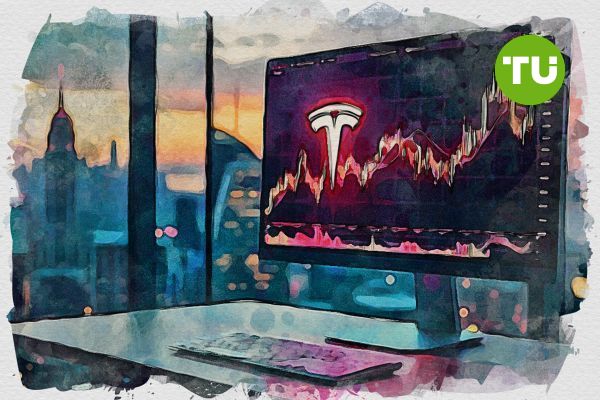Tesla stock falls below $324 as delivery outlook tempers excitement over self-driving milestone
 Analysts are projecting just under 400,000 deliveries, which would represent a 10% year-over-year decline
Analysts are projecting just under 400,000 deliveries, which would represent a 10% year-over-year decline
As of June 30, Tesla stock is trading at $323.63, down 0.7% over the past 24 hours.
The recent price action indicates that the stock is consolidating near a key resistance level after a strong rebound over the past three months.
Highlights
- Tesla completed its first fully autonomous vehicle delivery, highlighting progress in its self-driving ambitions.
- Analysts expect Q2 vehicle deliveries to fall about 10% year-over-year, raising concerns over core demand.
- The stock is consolidating near $330, with a breakout or breakdown likely following the July 2 delivery report.
Tesla is currently testing the $330 resistance zone, a level that has historically capped upward momentum. A sustained move above this level would be technically significant, potentially opening the path toward $345 and higher. On the downside, support is evident near $310, with a more robust floor at $295, where the 200-day moving average is located. These levels are critical for determining near-term investor sentiment and directional bias.
Moving average analysis supports a cautiously bullish outlook. The 50-day moving average has risen to around $312, while the 200-day moving average remains steady at $295. The alignment of the 50-day above the 200-day indicates a golden cross pattern that often suggests bullish momentum. That said, the recent pullback hints at a possible pause or retest of lower support zones if upcoming news fails to sustain buying pressure.

TSLA stock price dynamics (April 2025 - June 2025). Source: TradingView
The Relative Strength Index (RSI) stands at 58, not yet in overbought territory but approaching it. This level suggests that while momentum favors the bulls, the stock may encounter selling pressure if it climbs further without a fundamental catalyst. Volume has also picked up in recent sessions, a typical precursor to significant price moves. The stock’s recent intraday range, from $317.55 to $329.25, underscores its current volatility.
Autonomy milestone and delivery risks
Tesla's recent autonomous delivery of a Model Y from its Austin Gigafactory to a customer’s home has drawn substantial attention. This event marks the first reported instance of a completely driverless vehicle completing a commercial delivery, showcasing the company’s continued push into autonomous driving. While Tesla has faced skepticism over its Full Self-Driving (FSD) technology, this milestone adds tangible progress toward its long-promised robotaxi fleet.
However, the market remains cautious ahead of the company’s second-quarter delivery report, scheduled for release on July 2. Analysts are projecting just under 400,000 deliveries, which would represent a 10% year-over-year decline. This anticipated dip stems from softening demand in core markets such as the United States and Europe, as well as aggressive pricing competition from Chinese electric vehicle manufacturers. Tesla’s persistent price cuts have helped support sales but at the cost of margins.
Complicating Tesla’s outlook is CEO Elon Musk’s increased political activity, which has had a polarizing effect on consumer sentiment and brand loyalty. Nevertheless, several analysts maintain bullish long-term views. Notably, Benchmark analyst Mickey Legg recently raised his TSLA price target from $350 to $475, citing the transformative potential of the company’s robotaxi ambitions. These developments reflect a broader market debate over Tesla’s identity as a carmaker versus a technology innovator.
Tight range likely until July 2 delivery data
In the days ahead, Tesla stock is likely to trade in a tight band between $310 and $330, with investors awaiting confirmation from the Q2 delivery numbers. A positive surprise could drive TSLA above $330, with $345 as the next upside target. Momentum would then likely draw in technical buyers, especially if volume confirms the breakout. On the other hand, a shortfall in deliveries could send the stock below $310, possibly triggering a drop to the $295 support level.
Investors should expect elevated volatility through early July. The delivery report will serve as a litmus test for Tesla’s execution in a challenging macro environment and could either validate or contradict the optimism surrounding its technology narrative. Until then, caution is warranted, with a preference for range-bound strategies. The stock’s ability to sustain recent gains despite broader electric vehicle sector softness suggests resilience, but risks remain.
Tesla's ongoing stock decline reflects fundamental weaknesses, notably five straight months of falling European sales. Sharp drops in key markets like Germany, the UK, and France are driven not just by Model Y transition gaps, but also by intensified competition from BYD and European rivals.













































































































































